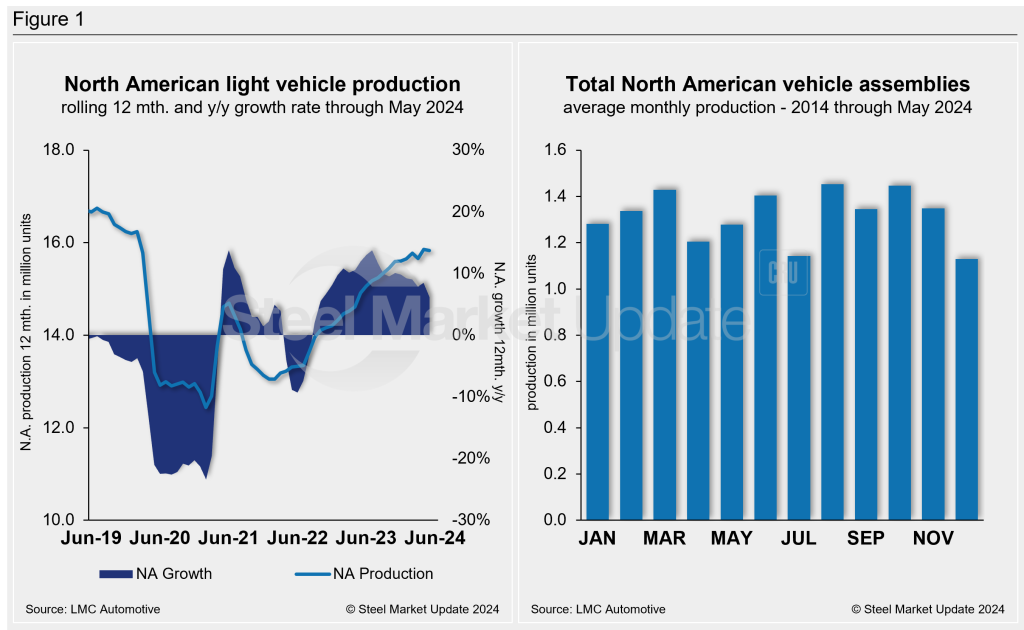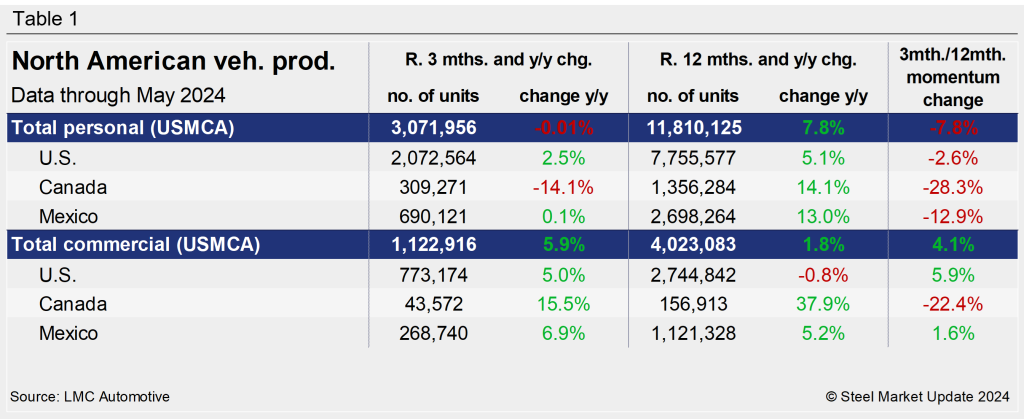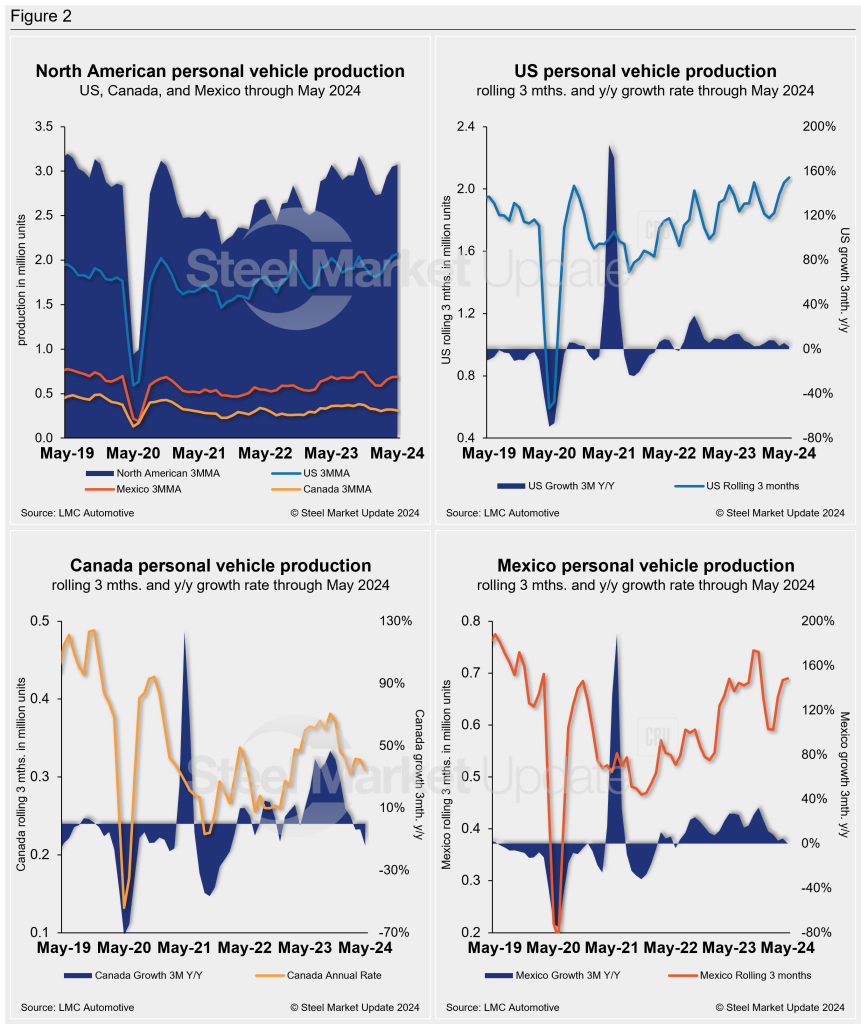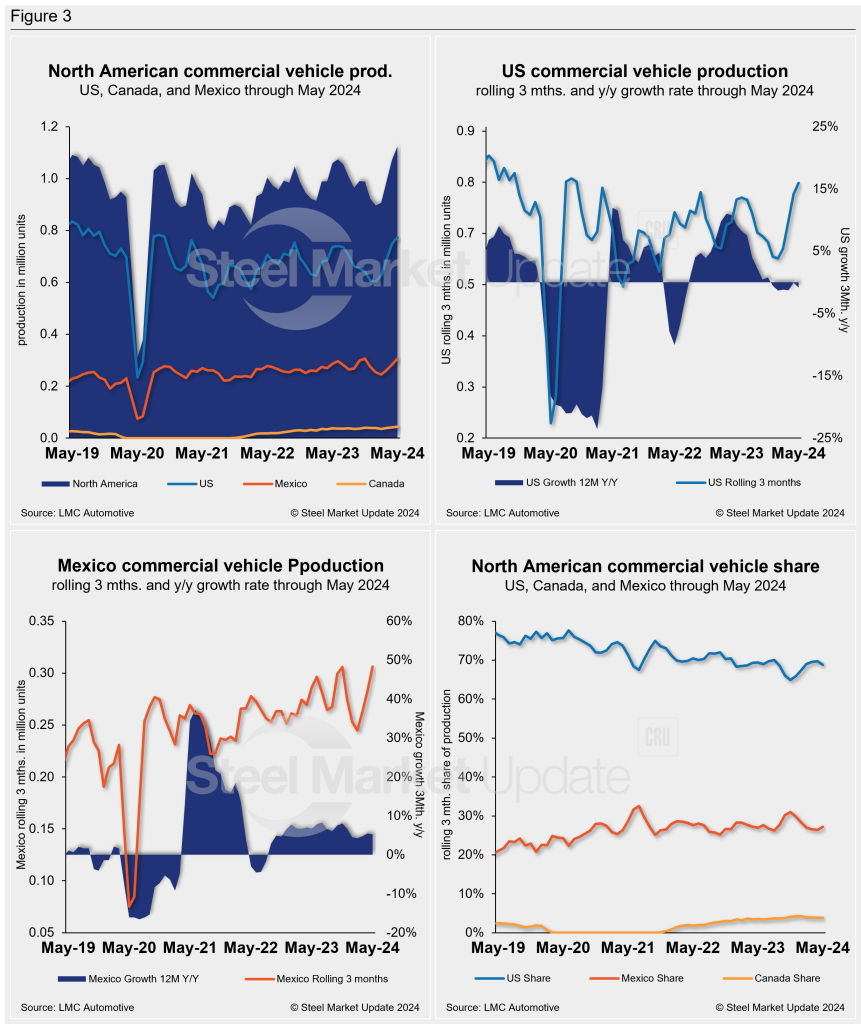Manufacturers/End Users
June 18, 2024
North American auto assemblies reach a nine-month high
Written by David Schollaert
North American auto assemblies ticked higher in May, moving up for the second straight month and reaching a nine-month high, according to LMC Automotive data. While assemblies were up month on month (m/m), they are still 1.7% lower year on year (y/y).
The boost in supply over the past year continues to push the market forward.
Supply improvements have created a more balanced state, a dynamic the industry hasn’t seen since before the pandemic.
Assembly recovery has been supported by continued supply improvements. Days’ supply of inventory reached 51 in April, up from 48 the month prior.
North American vehicle production, including personal and commercial vehicles, totaled 1.43 million units in May, a 0.7% increase from 1.42 million units in April. It’s roughly 1.7% behind, however, the 1.46 million produced one year ago.
Below in Figure 1 is a five-year snapshot of North American light-vehicle production since 2019 on a rolling 12-month basis with a y/y growth rate. Also included is a five-year snapshot of the average monthly production, which includes seasonality since 2019.

A short-term snapshot of assembly by nation and vehicle type is shown in the table below. It breaks down total North American personal and commercial vehicle production into US, Canadian, and Mexican components. It also includes the three- and 12-month growth rates for each and their momentum change.
For the three months and 12 months through May, the growth rate for total personal and commercial vehicle assemblies in the USMCA region is positive – with personal well ahead. The momentum change, however, remains noticeably behind for the personal vehicle segment.

Personal vehicle production
The longer-term picture of personal vehicle production across North America is shown below. The charts in Figure 2 show the total personal vehicle production for North America and the total for the US, Canada, and Mexico.
In terms of personal vehicle production, the region saw a 0.2% m/m decline in May, after seeing a 5% boost the month prior. The result was a more pronounced 3.3% loss vs. the period one year ago.
The US was the only market to post a production gain m/m, with an increase of 3.6% or 24,720 units in May. Canada, produced 13,796 fewer units (-12.6%), while Mexico produced 12,516 fewer units (-5.1%) m/m.
Production share across the region changed little. The US saw personal vehicle production share of the North American market at 67.5%, followed by Mexico and Canada at 22.5% and 10.1%, respectively.

Commercial vehicle production
Total commercial vehicle production for North America and the total for each nation within the region are shown in the first chart in Figure 3 on a rolling three-month basis. Commercial vehicle production in the US and Mexico and their y/y growth rates, as well as the production share for each nation in North America, are also shown.
North American commercial vehicle production was again a bright spot in May, up 3.1% m/m with a total of 393,622 units produced during the month. It was an increase of 11,772 units vs. April, and nearly a five-year high. The gain was driven by the US and Canada, which saw a 4.5% (+11,657 units) and 4.6% (+667 units) boost in commercial vehicle assemblies, respectively.
May marked Canada’s 31st straight month of commercial vehicle assemblies after ceasing production for nearly two years from Jan. 2020 through Oct. 2021.
The overall increase put the commercial production growth rate at 5.9%% for the region last month, slightly behind the growth rate gain of 8.5% in April.
The market share across the region was largely unchanged. The US total share was 68.9%, followed by Mexico with a 27.3% share, and Canada with a 3.9% share in May.
Presently, Mexico exports just under 80% of its light-vehicle production, with the US and Canada as the highest-volume destinations.

Editor’s Note: This report is based on data from LMC Automotive for automotive assemblies in the US, Canada, and Mexico. The breakdown of assemblies is “Personal” (cars for personal use) and “Commercial” (light vehicles with less than 6.0 metric tons gross vehicle weight rating; heavy trucks and buses are not included).







